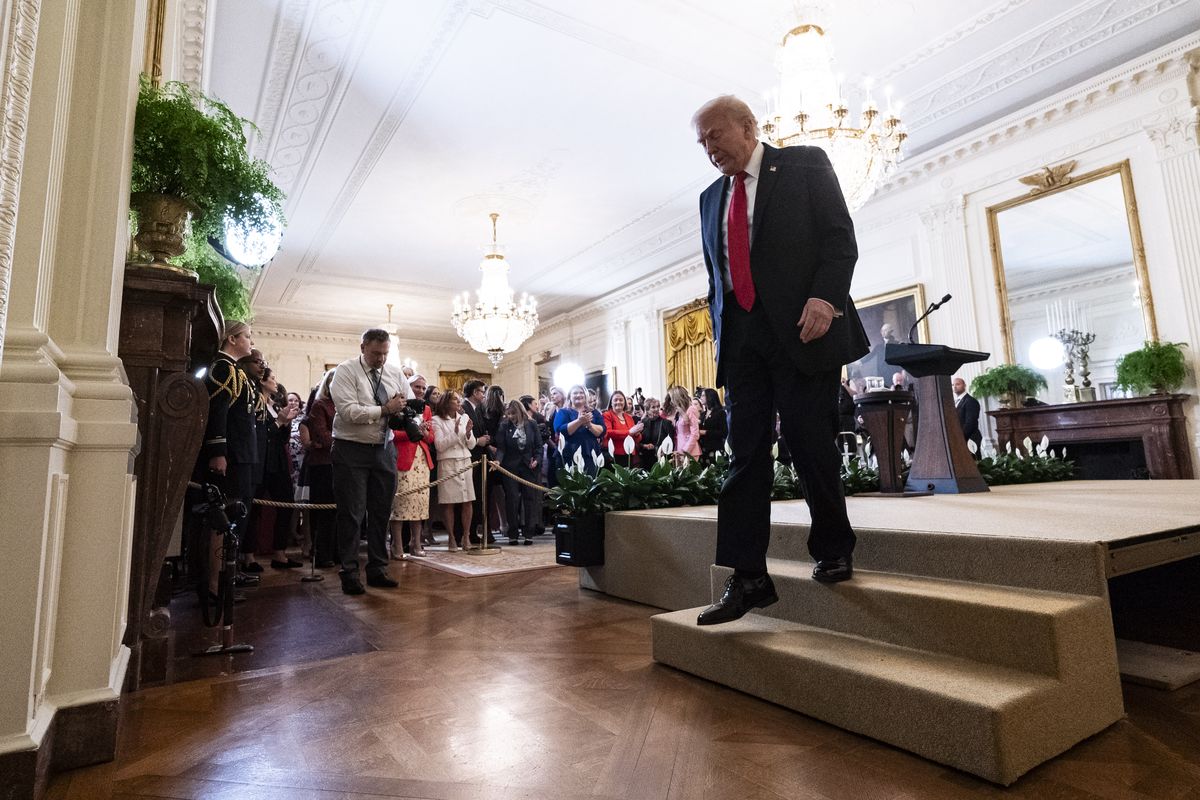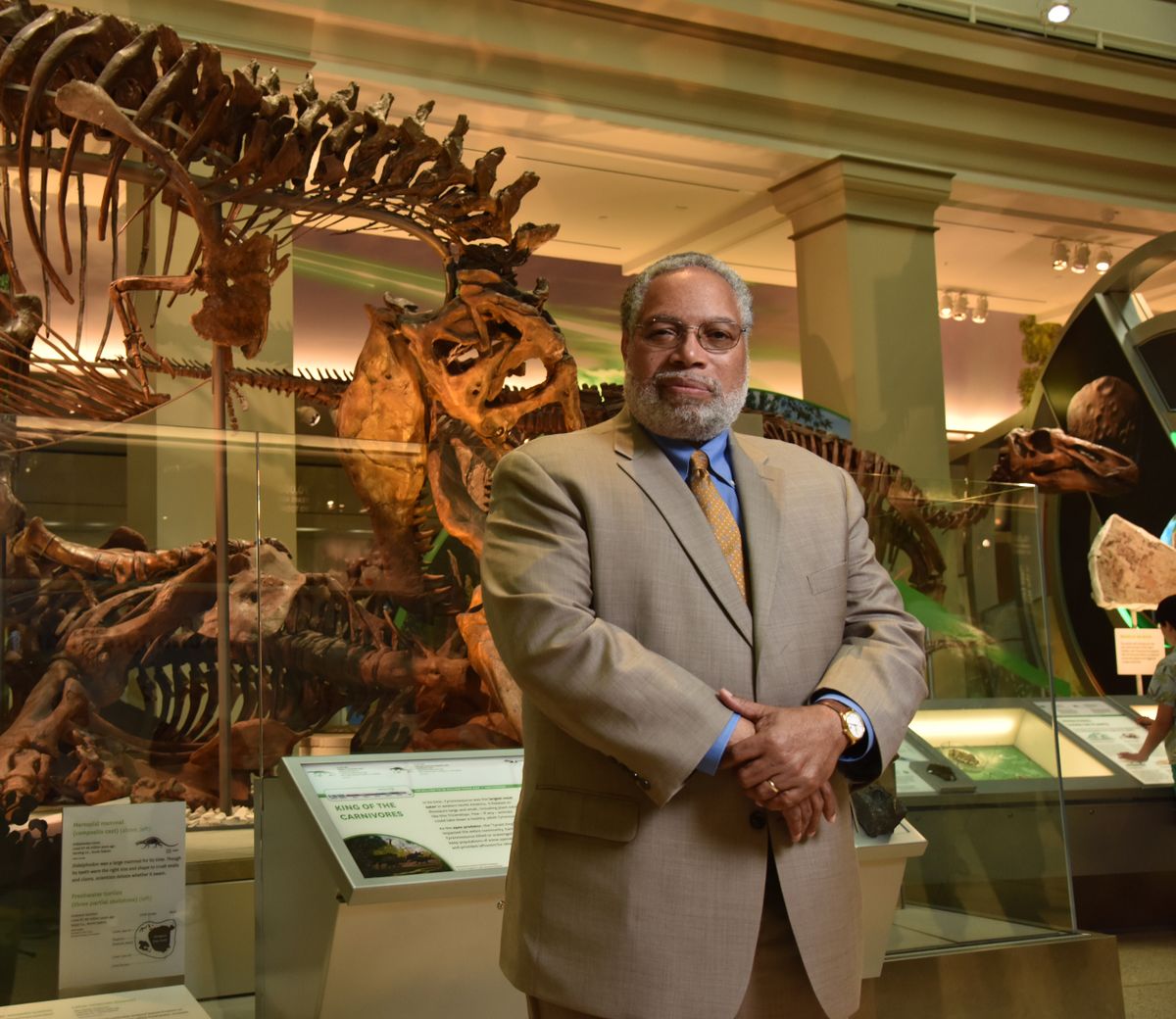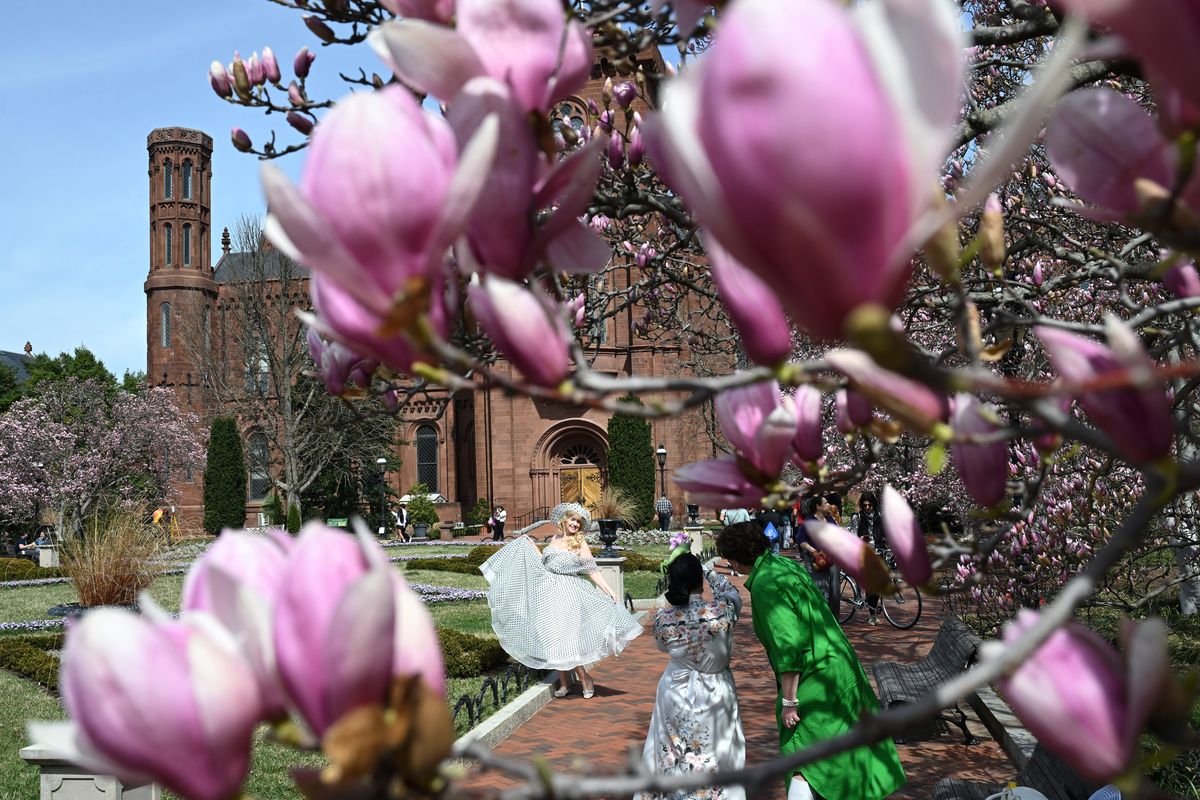Trump issues executive order to eliminate ‘anti-American ideology’ from Smithsonian
Blooming Magnolia trees outside the Smithsonian Castle on March 19. (Matt McClain/The Washington Post)
President Donald Trump issued an executive order Thursday evening promising to eliminate “divisive narratives” from the Smithsonian Institution’s museums and restore “monuments, memorials, statues, markers” that have been removed over the past five years.
The “Restoring Truth and Sanity to American History” order directs Vice President JD Vance to eliminate what he finds “improper” from the institution, including its museums, education and research centers, and the National Zoo. The White House fact sheet describing the order said it will focus on removing “anti-American ideology.”
The institution, the official keeper of the American story, has operated independently as a public-private partnership created by an act of Congress in 1846. The order is an unprecedented act to edit an institution that has been expanding for decades to include a wider, richer and more diverse telling of the nation’s history.
“Over the past decade, Americans have witnessed a concerted and widespread effort to rewrite our Nation’s history, replacing objective facts with a distorted narrative driven by ideology rather than truth,” the executive order says. “This revisionist movement seeks to undermine the remarkable achievements of the United States by casting its founding principles and historical milestones in a negative light.”
Trump’s order calls the museum’s evolving approach a reconstruction of history that is “inherently racist, sexist, oppressive, or otherwise irredeemably flawed.”
Historians were immediately dismayed.
“Attacking the idea that telling the whole story of the United States is an ideological plot to cast the United States in a negative light testifies to a stunningly brittle insecurity about our nation and its past,” said Chandra Manning, a professor of American history at Georgetown University.
“It seems to suggest that if we allow anyone to hear the whole story of challenges that Americans have overcome, our nation will shatter. The American people are not so fragile as all that,” Manning said.
Trump’s executive order demands an “ideological purity test” and “restores neither truth nor sanity,” said Adam Rothman, an American history professor at Georgetown University. “The president’s proclamation disrespects the thousands of sincere and dedicated researchers, curators, scientists, guides, interpreters, docents and countless other people who work hard every day to preserve and tell the nation’s story truthfully, and in ways that educate and inspire the American public.”
Trump’s order cited examples of exhibits he says portray American and Western values as “inherently harmful and oppressive.” It also prohibits any transgender women from being included in the forthcoming American Women’s History Museum, which currently exists as an online exhibit and estimates construction could be more than 10 years away.
“Once widely respected as a symbol of American excellence and a global icon of cultural achievement, the Smithsonian Institution has, in recent years, come under the influence of a divisive, race-centered ideology,” the order says.
And it takes specific aim at one of the newest editions to the Smithsonian’s portfolio of 21 museums – the National Museum of African American History and Culture, which opened in 2016 under the leadership of historian Lonnie G. Bunch III, who the became the Smithsonian’s 14th and first African American secretary in 2019.
The order alleges that the museum “has proclaimed that ‘hard work,’ ‘individualism,’ and ‘the nuclear family’ are aspects of ‘White culture.’ ” Those phrases appeared in an infographic on the museum’s website five years ago, in a section addressing the way race is often talked about. It was removed in 2020, after Donald Trump Jr. sparked criticism over those words in a social media post.
The Smithsonian is governed by a Board of Regents, which is made up of nine citizens, six members of Congress, Chief Justice John G. Roberts Jr. and Vance.
Vance, the executive order states, will work with Trump’s executive staff “to effectuate the policies of this order through his role” and will work with Congress and the Office of Management and Budget to withhold funding for exhibits that he decides “degrade shared American values, divide Americans based on race.”
It’s unclear how much power Vance may have to implement the order beyond arguing to withhold funding. Smithsonian officials did not return a request for comment.
Federal money makes up 62 percent of the institution’s annual budget. Private funding of about $300 million annually makes up the balance, according to its website.
Restoring any monuments or memorials removed since Jan. 1, 2020, is also part of the executive order. That was the start of an American reckoning with the way Confederate icons were honored in public spaces. Numerous statues and memorials were removed or relocated by local governments.
The order does answer Philadelphia’s plea for federal funding to restore Independence Hall in time for the nation’s 250th anniversary next year. It says that historical sites should remind Americans “of our extraordinary heritage, consistent progress toward becoming a more perfect Union, and unmatched record of advancing liberty, prosperity, and human flourishing.”
But Manning said Americans crave a fuller accounting of the past because it also inspires in the way our nation has overcome adversity.
“They are not interested in empty cheerleading,” she said. “They want to know about the fellow human beings, with all their strengths and all their complications, with all their flaws, with all their infinite variety, who shaped the past, and in so doing also shape our present.”


